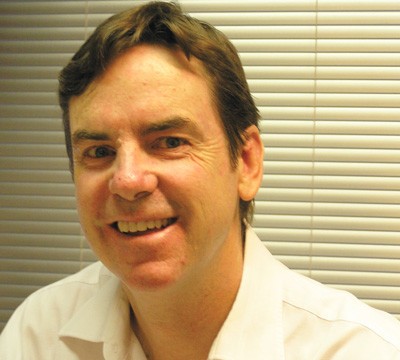
Sports physician and Eagles medico Dr Gerard Taylor suggests that there have been some positive changes in the area of sporting injuries, but that the real gains are being seen in the treatment of degenerative conditions.
Medical Forum caught up with Gerard while he waited in a hotel room in Adelaide for the elimination final against Port Adelaide. Yes, that Luke Shuey goal!
“I’d have to say that not much has changed in the area of ankles and knees, things like ligament tears, meniscal injuries and shoulder dislocations caused by contact sports.”

Dr Gerard Taylor
“There’s no doubt whatsoever that age is a factor. Kids are pretty rubbery and not particularly heavily framed up to the age of 13 or 14 so we don’t see a lot of trauma up to that point. But once they get a bit older they start hitting each other a lot harder and that’s when we start getting problems.”
“As far as treatments go, it’s pretty much the same. The standard ‘rest, ice, compress, elevate’ still does the job. Cam Walkers and Splints are used a lot more now, and that means we’re using plaster a lot less. The combination of hand clinics and occupational therapists is making life much easier for all of us.”

Queues for surgery
“One aspect that hasn’t changed is that professional sportspeople are highly likely to see the bright lights of an operating theatre, and probably more than once!”
“We have one Eagles player who has just notched up 30 operations and it is becoming pretty standard end-of-season practice that we’ll have 10 players out of a squad of 40 lined up to see a surgeon. Some players are definitely more injury prone and we also have meniscal problems requiring multiple operations.”
Gerard thinks the standard of orthopaedic surgery in Perth is particularly high and he has a comment or two regarding the increasingly common practice of spending money on return tickets to America.
“The West Coast Eagles are very well resourced so they’re happy to seek out the best treatment anywhere in the world. Bill Knowles is a physiotherapist in Philadelphia and he’s got an excellent reputation among elite athletes in the US system. Nic Naitanui’s much publicised treatment was very much in the final proprioceptive rehabilitation stage. The club sent a physio over with Nic and he’s come back with some useful tips.”
Good news for tendons
When it comes to the area of degenerative damage – not strictly ‘trauma’, as Gerard freely acknowledges – there’s plenty of good news.
“We do see a lot of ageing warriors and one of the big challenges with them is tendon disease. It’s got poor healing capacity and it’s a bad condition to have because it can be quite disabling. One approach that seems to be working well is Eccentric Exercise, and particularly so for strengthening the Achilles tendon.”
[Eccentric Resistance Exercise is muscle contractions involving the shortening and lengthening while the muscle is still producing force. The phase of contraction that occurs when the muscle shortens is concentric, whereas the phase of contraction that occurs as the muscle lengthens is eccentric.]
“We’re also getting good anecdotal reports on PRP [Platelet Rich Plasma] injections for partial tendon tears in the elbow and proximal patellar tendon tendinopathy. The early results are positive.”
Gerard has a few more sharp points to make.
“We’ve seen good outcomes with Hyaluronic Acid and Durolane. They’re not cures admittedly, but we’re getting positive temporary improvements that would otherwise see people heading for joint replacement surgery. Ultrasound is another area showing a great deal of promise. We now use radiologists to deliver PRP in a highly targeted way, which is proving to be useful with hamstring tendons.”
“Hopefully, we’ll begin to get some good literature to back all this up and then we can go back to the government and get some Medicare funding!”

